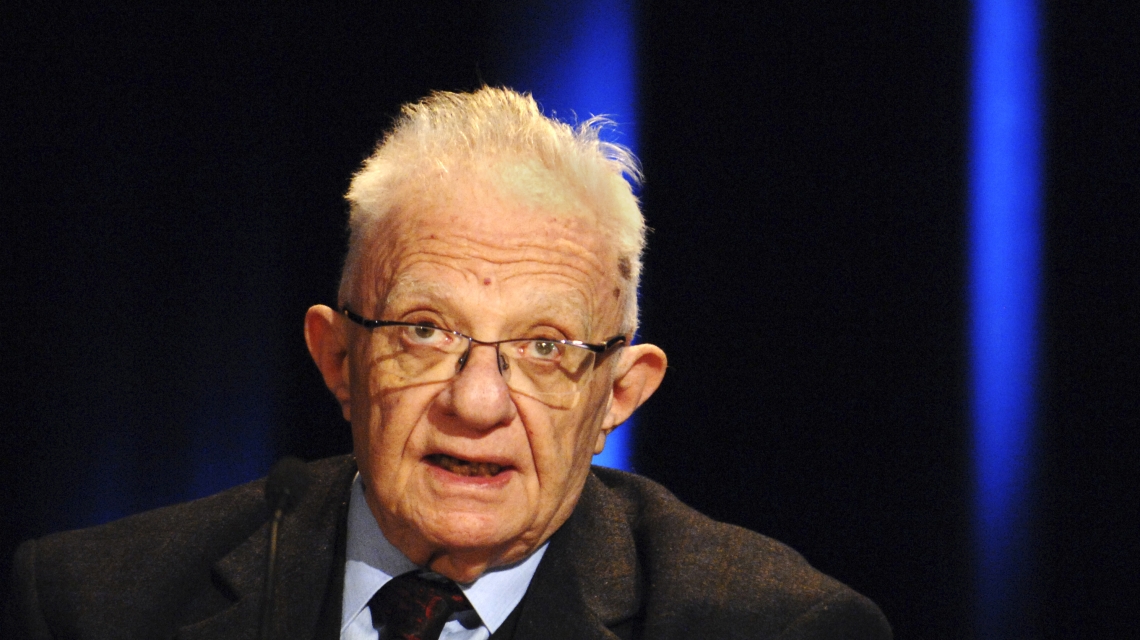About Shmuel N. Eisenstadt

Professor S.N. Eisenstadt (born in Warsaw in 1923) is a legend of modern sociology and social science as a whole. There is probably no living social scientist whose works to the same degree combines advances in sociology and anthropology in the American setting in the post World War II period, historical and religious studies of civilizations outside of a Western context, and a European tradition of humanistic thought, epitomized by his teacher and predecessor in the Chair in Jerusalem, Martin Buber.
By Björn Wittrock is University Professor at Uppsala University and Principal of the Swedish Collegium for Advanced Study, Uppsala.
His early works addressed problems of political and social development in a broad comparative and historical context, and in these endeavours Eisenstadt closely collaborated with the towering Norwegian scholar Stein Rokkan. A pathbreaking work by Eisenstadt from this period is his comprehensive study of The Political Systems of Empires (1963), which at once ensured him world renown in sociology and political science. This work exhibits characteristics of the then dominant style of structural-functional theorizing of which his Harvard colleague Talcott Parsons was the pre-eminent representative, not least in terms of a meticulously detailed taxonomy, but it also went beyond that tradition in the range of its historical orientation. More importantly perhaps both in this work and in a number of other studies of social transformations, Eisenstadt has focussed on the interplay between cultural and structural processes of change and on inherent tensions and antinomies rather than on uniform processes of development.
For Eisenstadt, societal change is always the result of human action, and human action is open to divergent and contradictory tendencies. In this perspective it is the task of the social scientist to highlight these tensions and antinomies and not to gloss over them in favour of uniformity. This basic stance, which Eisenstadt himself claims was something he learnt from Martin Buber, may help explain, why Eisenstadt to a higher degree than almost any other leading social scientist of our age has always been able to attract the attention of young scholars and consistently to come up with new and unexpected formulations of societal problems.
For Eisenstadt modernity was never mainly the successful end-result of a process of differentiation and modernization. Even if those elements are relevant, modernity for him is rather a situation characterized by a lack of markers of certainty. As such it entails great potentials but also great threats of the use of violence. Moreover, and more persistently and more systematically than any other social scientist, Eisenstadt argued against the identification of modernity with a Western tradition. Even if the contemporary world is one characterized by a belief in the potential of human action to change social and political conditions, there are many different sets of such beliefs and many different institutional paths. In works on India, China, Japan - in particular the great study of Japanese Civilization: A Comparative View (University of Chicago Press, 1996) - and on Islamic societies, Eisenstadt was able to demonstrate that these societies in fact exhibited both cultural and institutional features, typical of modern societies, at a much earlier stage and in much more widespread form, than scholars had assumed.
On a systematic level, he has in the course of the past fifteen years worked out what has become the most important alternative to both classical modernization theory and to ideas about an inevitable clash of civilizations, namely the paradigm of multiple modernities. Against this background one should not be surprised by the fact that Eisenstadt has questioned standard assumptions in contemporary debates. In works from recent years, e.g. Fundamentalism, Sectarianism and Revolutions (Cambridge University Press, 2000), he has consistently argued that fundamentalism is not a traditional but a modern phenomenon.
While all these and many other contributions may help form the image of a versatile, learned and imaginative scholar, what makes him unique is the fact that his interest in the condition of human beings in a modern world, is part of a truly global vision, of humanity in world historical context. In such a context one of the most momentous transformations is to Eisenstadt the, often revolutionary, formation of the world of multiple modernities in which we now live. However, in the history of human societies in the course of the last three millennia an equally momentous period is that of the so-called Axial breakthroughs of the middle of the first millennium BCE and onwards. These breakthroughs, which first occurred in some region of the Old World, including Ancient Greece, Ancient Israel, India and China, involved the emergence of a separation between a mundane and a transcendental sphere and the creation of a situation when Kings could no longer claim to be Gods. These axial transformations helped form the Great World religions, the classical Empires and other new forms of political order, and serve as the backdrop for virtually all subsequent processes of deep-seated political, cultural and religious change.
While this hypothesis was outlined in schematic form by the Weber brothers, by the philosophers Jaspers - who spoke about the transition from Mythos to Logos - and Cassirer, who examined the limits of mythical thinking in the second volume of his magnum opus, The Philosophy of Symbolic Forms, it is Eisenstadt who, on the basis of continuous dialogue with the greatest specialist historians of the different early civilizations, has worked out the implications of this hypothesis and made it central to any discussion of religion, political order and society in both antiquity and the modern world. Thereby he has constructed what is the only contemporary counterpart to Max Weber's three monumental volumes of the sociology of religion.
S.N. Eisenstadt is a towering and inspiring scholar who through a perpetually youthful curiosity continues to inspire young scholars across the world.